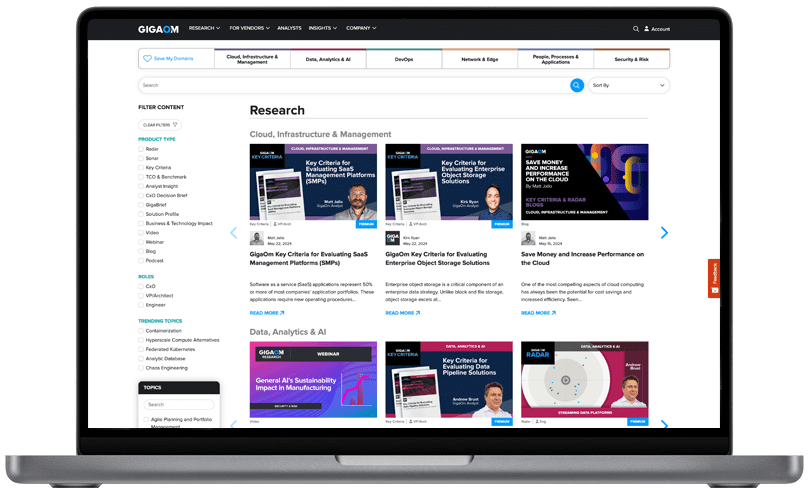Table of Contents
- Executive Summary
- Geographical Coverage
- Decision Criteria Comparison
- GigaOm Radar
- Solution Insights
- Analyst’s Outlook
- Methodology
- About Andrew Green
- About GigaOm
- Copyright
1. Executive Summary
Edge development platforms operate globally distributed infrastructure and offer computing and developer services for creating and running applications closer to end users. These solutions are built upon geographically distributed points of presence (PoPs) that are connected by a global network backbone. These PoPs behave as mini data centers situated within 20 milliseconds of major metropolitan areas, thereby considerably reducing the network latency associated with running workloads off-device.
While reducing network latency is a core feature of edge-related solutions, organizations also need to consider and tackle challenges associated with compute latency, or the time it takes to spin up and process a request. To do this, edge development platforms are exploring edge-native execution environments, which are runtimes optimized for quickly processing web requests. These execution environments typically run directly on bare metal without requiring data center-grade hypervisors or operating systems.
Lastly, these solutions also reduce storage-related latency by using key-value stores. These offer very fast performance for reads and writes because the database is looking for a single key and returns its associated value rather than performing complex aggregations.
By reducing network, compute, and storage latency, edge development platforms simultaneously deliver the speed of running workloads locally and the centralized and modular capabilities of the cloud.
This report is a new iteration of our initial definition, with more focus on compute capabilities and developer experience. To capture this change, we have renamed the report “edge development platforms,” where previously it was just “edge platforms.” This new name also reflects some considerable changes in the vendor landscape, where multiple players have sold their content delivery network (CDN) businesses to focus exclusively on edge compute.
This is our fourth year evaluating the edge development platforms space in the context of our Key Criteria and Radar reports. This report builds on our previous analysis and considers how the market has evolved over the last year.
This GigaOm Radar report examines 13 of the top edge development platforms and compares offerings against the capabilities (table stakes, key features, and emerging features) and nonfunctional requirements (business criteria) outlined in the companion Key Criteria report. Together, these reports provide an overview of the market, identify leading edge development platform offerings, and help decision-makers evaluate these solutions so they can make a more informed investment decision.
GIGAOM KEY CRITERIA AND RADAR REPORTS
The GigaOm Key Criteria report provides a detailed decision framework for IT and executive leadership assessing enterprise technologies. Each report defines relevant functional and nonfunctional aspects of solutions in a sector. The Key Criteria report informs the GigaOm Radar report, which provides a forward-looking assessment of vendor solutions in the sector.
